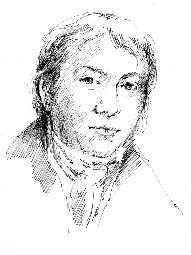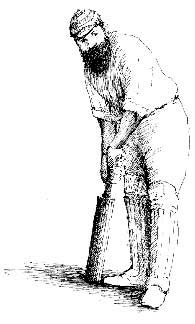Gloucestershire
DARK DEEDS ∗ BIRTHPLACE OF MODERN
CONSERVATION ∗ BIGGEST NORMAN TOWER
∗ CHEESE ROLLING ∗ CHAMPAGNE
∗ MANOR HOUSES
Tewkesbury Abbey, with the biggest Norman tower in the world.
GLOUCESTERSHIRE FOLK
Edward Jenner ∗ W.G. Grace ∗ Robert Raikes ∗ Beatrice Webb ∗ Frederick Sanger
Berkeley Castle
The little town of BERKELEY is an oasis of calm set in flat land between the River Severn and the M5. It is dominated by the castle, looming above the water meadows, impregnable and stern, proud home to the Berkeley family since the days of Henry II, and THE OLDEST CASTLE IN ENGLAND STILL INHABITED BY THE FAMILY WHO BUILT IT. The Berkeleys are one of only three English families who can trace their roots directly back to their Saxon ancestors.
Dark deeds were done at Berkeley Castle. One September night, as the mist rolled in off the Severn, the townsfolk were awoken by hideous screams that went on and on, sending birds wheeling into the sky and dogs howling with terror. Eventually the cries faded into whimpers and then a thick, brooding silence. The next morning, the horribly mutilated body of KING EDWARD II was found in his cell in the castle, done to death most foully, by two knights sent from his own Queen.
The previous year Edward II had been forced by his wife, Queen Isabella, and her lover, Roger de Mortimer, to abdicate the throne in favour of his young son Edward III. The old king was sent to end his days at Berkeley, tended to by a sympathetic Lord Berkeley. He lived too long, however, and made the guilty Queen uneasy, so she sent her men, SIR JOHN MALTRAVERS and SIR THOMAS GURNEY, to hasten his demise. Lord Berkeley was sent away and the knights set about their task, taunting the King for his homosexuality, putting flowers in his hair and finally killing him by inserting a red-hot poker deep into his bowels.
The Abbot of Gloucester came in reverence to claim the body, and Edward III, shocked by his father’s cruel death, raised a splendid tomb for him in Gloucester Cathedral. It soon became a place of pilgrimage, and the wealth the pilgrims bought with them built the glorious medieval cathedral we see today, a wondrous monument wrought from an evil act.
Slimbridge
A popular tenant of the Berkeley estate is the WILDFOWL AND WETLANDS TRUST at SLIMBRIDGE, founded in 1946 by SIR PETER SCOTT, son of the polar explorer Robert Falcon Scott. Covering 1,000 acres (405 ha) and home to 164 different species of bird, it is THE LARGEST AND MOST VARIED WILDFOWL CENTRE IN THE WORLD and THE ONLY PLACE IN ENGLAND WHERE YOU CAN SEE ALL SIX SPECIES OF FLAMINGO. Slimbridge is considered to be the birthplace of modern conservation.
Tewkesbury
The tower of TEWKESBURY ABBEY is THE LARGEST NORMAN TOWER IN THE WORLD. Buried inside the Abbey, beneath a simple brass plate on the floor of the sanctuary, is Edward, Prince of Wales, son of Henry VI, killed by the Duke of Clarence at the Battle of Tewkesbury in 1471.
The old oak door of the church at DIDBROOK, in the Cotswold Hills a few miles east of Tewkesbury, has holes in it made by Yorkist bullets, fired at Lancastrian soldiers who had fled from the Battle of Tewkesbury and sought refuge here. These marks were made by some of the earliest bullets ever fired from a handgun.
The Saxon font in the church at DEERHURST, on the River Severn near Tewkesbury, is THE OLDEST FONT IN ENGLAND.
Cheese Rolling
One to be ready!
Two to be steady!
Three to prepare!
Release the Cheese!
(The signal for the specially invited guest ‘roller’ to let go the cheese)
And Four to be off!
And so begins the annual CHEESE ROLLING competition at COOPER’S HILL, near Brockworth.
Slightly nutty people come from all over the world, from Japan, Australia, New Zealand, the home of dangerous sports, and even Wales, to chase an eight-pound Double Gloucester Cheese down a precipitous Gloucestershire hillside on Bank Holiday Monday at the end of May – for fun.
The ceremony, which used to take place on Midsummer’s Day, dates back hundreds of years to pagan times and is thought to have its roots in fertility rites and supplications for a bountiful harvest. There are the remains of an ancient British fort at the top of the hill, which suggests that some sort of activity may have taken place here even before the Romans arrived.
There are five races, one of them for ladies, and the first person to reach the bottom of the hill in pursuit of the cheese wins . . . a cheese! The course is 600 ft (183 m) long and the average slope is 1 in 2, although in places it is 1 in 1.
In olden times there was no limit to the number of runners, but for safety reasons races are now restricted to a maximum of 15 competitors. There are no entry qualifications – it is first come, first served.
Cheese rolling can be very dangerous, and every year sees a crop of injuries, usually sprains and bruises. The cheese has been known to bounce into the crowd, and in 1997 the cheese hit a spectator and sent him flying down the hill.
The cheese has been rolled without a break every year in living memory, although the actual race has been cancelled three times recently, once for health and safety reasons, once as a result of foot-and-mouth disease, and in 2003 because of an earthquake. On these occasions the organisers rolled a solitary cheese down the hill to maintain the tradition.
Champagne
CHAMPAGNE was invented in England by a doctor, CHRISTOPHER MERRETT, born in WINCHCOMBE in 1614. In 1662 he presented a paper to the Royal Society in which he sets out a technique for making wine sparkle by adding sugar and molasses. This had been made possible by the invention in 1630 by ADMIRAL SIR ROBERT MANSELL, of a coloured glass, incorporating iron and manganese, which could be used to make bottles strong enough to contain the fermentation process.
This ‘méthode traditionelle’ was adopted in 1695 by a French monk and winemaker in the Champagne region of France called Dom Perignon, who used it to give sparkle to his own wines.
Nether Lypiatt Manor
Two English Manor Houses
Nether Lypiatt Manor
Prince and Princess Michael of Kent once lived in the exquisite, dream-like, NETHER LYPIATT MANOR, hidden away in the hills above Stroud. It was built in 1698 by ‘Hanging Judge’ Cox, whose son ironically hanged himself in one of the rooms, and is supposed to haunt the place. Nether Lypiatt creates a magical illusion as it appears suddenly and unexpectedly beside a tiny, single-track hill-top Cotswold lane. It has 20 acres (8 ha) of gardens and is the loveliest of English houses.
Cowley Manor
COWLEY MANOR, 5 miles (8 km) north of Cheltenham, is a stunning Palladian-style mansion, very similar in looks to Cliveden, set in 50 acres (20 ha) of informal gardens, with lakes, cascades, a big rock garden and woodland walks. It was built in the 1830s by Sir James Horlick of the milky drinks family. He is buried in the churchyard alongside, and is reputed to climb in through the large window that overlooks the graveyard and walk up and down the first-floor corridor. He is, apparently, perfectly friendly.
Also buried in the churchyard of the enchanting little 12th-century church next door is Dorset innkeeper Robert Browning, 17th-century ancestor of the poet.
Lewis Carroll’s Alice in Wonderland, Alice Liddell, used to visit Cowley regularly to stay with her uncle, who was the rector there.
At the turn of the millennium Cowley Manor was bought by Jessica Sainsbury and turned into a luxury hotel and spa. Whether Sir James Horlick still walks the corridor is not in the hotel literature.
Buried in the church at Coberley, the next-door village, is buried Dick Whittington’s mother Joan. She lies beside her first husband, Sir Thomas Berkeley. Dick Whittington, Joan’s son by her second husband, Sir William Whittington, was born at Pauntley, north of Gloucester, in 1358, and became Lord Mayor of London four times.
Well, I never  knew this
knew this
about
GLOUCESTERSHIRE FOLK
Edward Jenner
1749–1823
In sharp contradistinction to the awful murder of Edward II at Berkeley Castle, lying in the chancel of the church at Berkeley is a man who saved lives. Born in Berkeley, the son of the vicar, EDWARD JENNER became a doctor and naturalist, and was determined to find a cure for smallpox, the most deadly disease of his time. As a countryman, he was familiar with country lore, including the belief that milkmaids who had caught cowpox never contracted smallpox. In May 1796 he vaccinated a farm boy, JAMES PHIPPS, in the arm, with cowpox taken from the hand of a dairymaid, SARAH NELMES. A few weeks later he inoculated the boy again, this time with smallpox, and when Phipps did not develop the disease, Jenner knew his theory was correct.
Jenner spent the rest of his life sharing his knowledge with others, and his principles of inoculation have been used to prevent diseases and infections throughout the civilised world. Although Farmer Jesty had administered the first vaccination in Dorset 20 years earlier, Edward Jenner was the first to promote the technique to a worldwide audience, hence his title as the Father of Inoculation.
W.G. Grace
1848–1915
WILLIAM GILBERT GRACE, England’s greatest cricketer, was born in DOWNEND, a suburb of Bristol, and practised in Bristol as a doctor. Famous for his trademark beard, he grew to be 6 ft 6ins (1.98 m) tall and was gigantic in prowess as well as stature. He was England captain and also led Gloucestershire to four county championships. They haven’t won since he retired.
In 1882 he scored THE FIRST EVER CENTURY FOR ENGLAND, in 1895 he became THE FIRST MAN TO SCORE 1,000 RUNS IN MAY, and he was THE FIRST CRICKETER EVER TO DO THE DOUBLE – that is score 1,000 runs and take 100 wickets in a season. He captained England for 11 years from 1888 to 1900 and his Test cricket career lasted 28 years, making him TEST CRICKET’S LONGEST-SERVING PLAYER. He was THE FIRST PLAYER EVER TO MAKE OVER £1 MILLION FROM CRICKET.
W.G. Grace lived for a while in CLIFTON, not far from Clifton College where, in June 1899, a schoolboy player called A.E.L. COLLINS scored 628 not out, THE HIGHEST SCORE FOR AN INNINGS IN THE HISTORY OF CRICKET.
ROBERT RAIKES (1735–1811), the founder of Sunday Schools, was born in GLOUCESTER.
BEATRICE WEBB (1858–1943), socialist and co-founder of the Fabian Society in 1884, the London School of Economics in 1895, and the New Statesman magazine in 1913, was born in STANDISH, south of Gloucester.
FREDERICK SANGER, two-time winner of the Nobel Prize for Chemistry, in 1958 and 1980, was born in RENDCOMB, near Cheltenham, in 1918. He is only the fourth person to win two Nobel prizes.


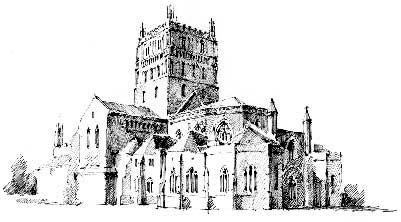

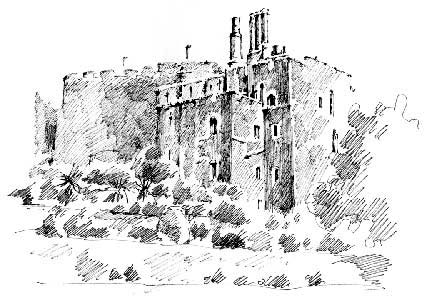




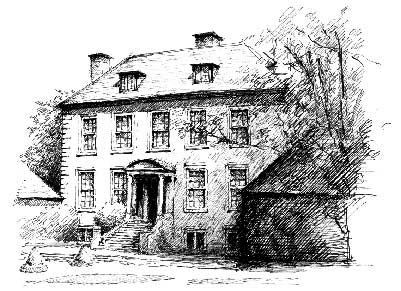

 knew this
knew this